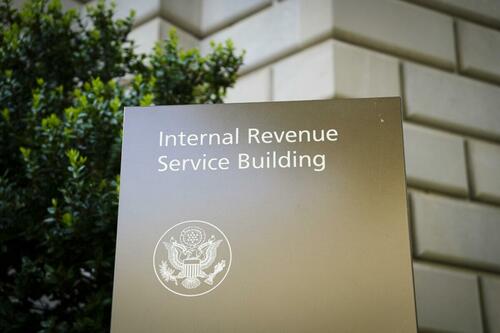
The Indian stock market , after smashing many record peaks this year, is facing consistent selling pressure and has now slipped into a correction phase after being in consolidation. Due to several domestic and global triggers, bears are dominating bulls on D-Street and the overall sentiment will likely stay muted in the next few sessions. In the third week of November, investors will closely monitor key market triggers, including Assembly elections , foreign fund outflows, Middle-East geopolitical tensions, US bond yields, the US dollar, crude oil prices, global cues, and domestic and global macroeconomic data.
Previously, domestic equity benchmarks Sensex and Nifty 50 logged their sixth weekly loss in seven weeks, falling nearly 10 per cent from their record-high peak hit in late September 2024, entering the correction phase. Also Read: Sensex, Nifty down 10% from peak amid FII exodus: What should be your trading strategy in correction phase? The Nifty 50 benchmark fell by around 2.50 per cent to settle the week at 23,532, while the BSE Sensex declined nearly 2.
40 per cent to end the week at 77,580. The NSE benchmark closed below the 200-day moving average for the first time since April 2023. Both benchmarks lost about 2.
5 per cent for the week. Despite a flat opening, pressure from heavyweight stocks pushed the equity benchmarks lower, resulting in a muted session to close the week. Concerns over rising retail inflation, driven by food prices , and persistent disappointments in corporate earnings weighed heavily on sentiment.
Most sectors mirrored the benchmarks with metals, FMCG, and auto stocks among the hardest hit. However, the IT sector showed resilience, gaining nearly a per cent amid the widespread selling. Broader indices, including midcap and smallcap stocks, lost over four per cent each.
Twelve of the 13 major sectors logged weekly losses. The Nifty Bank index fell nearly three per cent. Also Read: Decoding India’s food inflation | Vegetable prices sizzle to 57-month high; Any respite in near-term? Experts weigh in "This downturn, particularly in midcap stocks, suggests a cooling-off in areas previously seen strong investor interest.
The broader sentiment remains cautious due to ongoing global uncertainties, potential changes in interest rates, and evolving domestic factors. As the Q2 earnings season concludes, domestic consumption disappointed, while the financial and IT sectors performed well. Materials continue to face challenges due to pressures from global demand.
However, the market outlook stays cautiously optimistic despite the recent weakness," said Pravesh Gour, Senior Technical Analyst at Swastika Investmart Ltd. Also Read: Swiggy vs Zomato: Which food delivery stock should you buy for long-term? Here’s a 5-point analysis According to Palka Arora Chopra, Director of Master Capital Services Ltd, weak second-quarter earnings led to a valuation correction, a significant depreciation of the Indian rupee against the US dollar, a disappointing inflation reading for India, China's economic stimulus, and a rise in US 10-year bond yields—all of which have collectively pressured Indian equities. "Investors are rushed to unwind their positions in the riskier assets as the continuity of the premium valuation without fair earnings growth will not be sustained.
The muted H1FY25 results increased the scope of further downgrades in the FY25 Nifty EPS estimates. We factor a two to three per cent downward revision in the Nifty EPS estimate for FY25," said Vinod Nair, Head of Research, Geojit Financial Services. Also Read: CLSA hikes India allocation to 20% overweight on foreign inflow bets, reverses China call post-Trump win "Amid a setback in H1FY25, investors see some light in H2FY25 earnings due to an acceleration in government spending, a good monsoon, and a revival in rural demand.
Consolidation may continue in the near term; however, the beaten-down value stocks may witness bottom fishing due to their potential outlook," added Nair. This week, the primary market will witness action as some new initial public offerings (IPO) and important listings are slated across the mainboard and small and medium enterprises (SME) segments. The week will be critical from the domestic and technical point of view as investors will track domestic developments, global markets and macroeconomic data.
Here are the key triggers for stock markets in the coming week: Assembly elections The Indian stock market will remain shut on Wednesday, November 20 , in observance of the Maharashtra Assembly elections. The Assembly election results for Maharashtra and Jharkhand will be declared on Saturday, November 23. According to D-Street experts, elections will be pivotal in shaping market direction this week.
Also Read: Stock market holiday: NSE, BSE to remain closed on November 20 on account of Assembly Elections in Maharashtra 3 new IPOs, 4 listings to hit D-Street In the mainboard segment, NTPC Green Energy IPO will open for subscription this week, while Zinka Logistics Solution IPO will close for bidding. In the SME segment, two new issues will open for bidding. Among listings, shares of Zinka Logistics Solution will debut on stock exchanges BSE and NSE this week, while shares of three SMEs will get listed on either BSE SME or NSE SME.
Also Read: Zinka Logistics Solution IPO subscribed 32% on day 2 of issue, retail portion booked highest; Latest GMP here FII Activity With the earnings season largely concluded, attention will return to FII flows. Foreign institutional investors (FIIs) have been on a consistent selling spree for the past month and a half, offloading around ₹ 1.4 lakh crore in the cash market.
FIIs have been relentless sellers, contributing to market pressure. Domestic Institutional Investors (DIIs) have maintained their support, purchasing Rs. 26,522 crore in November.
"Given the volatility and FII selling pressure, investors may be cautious. Many will likely await signs of stabilization before increasing exposure to large-cap stocks, especially in sectors impacted by FII sell-offs," said Pravesh Gour, Senior Technical Analyst at Swastika Investmart Ltd. Also Read: FPIs offload ₹ 22,420 crore from Indian equities in November: 5 key factors behind sell-off Foreign portfolio investors (FPIs) extended their robust selling streak in Indian markets in the first fortnight of this month amid the uptrend in the US dollar and US bond yields, which was fueled by Republican Donald Trump's victory in the US presidential elections and the latest US Federal Reserve's interest rate cut verdict.
According to the National Securities Depository Ltd (NSDL) data, FPIs offloaded ₹ 22,420 crore worth of Indian equities , and the net outflow stood at ₹ 26,343 crore as of November 15, taking into account debt, hybrid, debt-VRR, and equities. October's FPI outflow hit a 10-month high, the highest sell-off from the Indian market YTD. The total debt investment was ₹ 362 crore.
Global Cues Key global economic indicators—including US bond yields, US dollar index performance, US unemployment claims, flash manufacturing and services PMI data, and Japan's inflation data—will be pivotal in shaping market direction. Investors will also examine any impact on Wall Street or the US dollar from announcements made by US President-elect Donald Trump. Also Read: US Fed rate cut: First inflation uptick in 7 months does little for Powell-led FOMC’s December plans; here’s why According to Pravesh Gour of Swastika Investmart Ltd, high US bond yields and a strengthening US dollar post-election have impacted emerging markets like India.
Crude oil prices, INR-USD index, and foreign capital outflow remain key factors influencing Indian equities in the near term. "Going ahead, the focus will be on the developments of the Trump administration and its implications for the EMs. The policy proposals will likely add upward pressure on US inflation, impacting the future Fed rate cut trajectory," said Vinod Nair of Geojit Financial Services.
Oil Prices International crude oil prices settled down more than two per cent in the previous session as investors fretted about weaker Chinese oil demand and a potential slowing in the pace of US Federal Reserve interest rate cuts after the latest macroeconomic data. Brent crude futures settled down $1.52, or 2.
09 per cent, to $71.04 a barrel . US West Texas Intermediate crude futures (WTI) settled down $1.
68, or 2.45 per cent, at $67.02.
For the week, Brent fell around four per cent, while WTI declined around five per cent. Back home, crude oil futures settled 1.86 per cent lower at ₹ 5,660 per barrel on the multi-commodity exchange (MCX).
Corporate Action Shares of several major companies will trade ex-dividend in the coming week, starting Monday, November 18, such as ONGC, Asian Paints, MRF, Cochin Shipyard, Info Edge, REC Ltd, among others. Check full list here Technical View According to D-Street experts, the Nifty recently tested its long-term moving average, the 200 DEMA, after breaking down from its previous consolidation range of 24,000-24,500, marking an overall correction of nearly 11 per cent from its recent peak. Key indices like banking, midcap, and smallcap tested their long-term support zones last week.
"The performance of the banking and IT sectors will be crucial in determining the market’s next move. A breach below 49,900 in the banking index could further pressure the Nifty down to the 22,700-23,100 range, while any recovery may face resistance around the 23,900-24,200 levels. Given the current conditions, a “sell on rise” strategy remains advisable for the index, while stock selection should be done cautiously.
For long-term investors, gradually accumulating fundamentally strong stocks with solid earnings could be prudent," said Ajit Mishra of Religare Broking. Bank Nifty ended the week down 2.68 per cent, breaking its consolidation zone and showing selling pressure at higher levels.
Immediate support lies at 49,900, and a breakdown below this could drive the index toward 49,000, with further downside to 48,700 if selling intensifies. "On the upside, resistance is at 50,500, and a breakout above this could push the index to 51,200, with an extension to 51,500. Traders are advised to follow a "sell on rise" strategy near resistance levels, as market sentiment remains bearish and downside risks persist," said Palka Arora Chopra of Master Capital Services Ltd.
Disclaimer: The views and recommendations provided in this analysis are those of individual analysts or broking companies, not Mint. We strongly advise investors to consult with certified experts before making any investment decisions, as market conditions can change rapidly and individual circumstances may vary..














